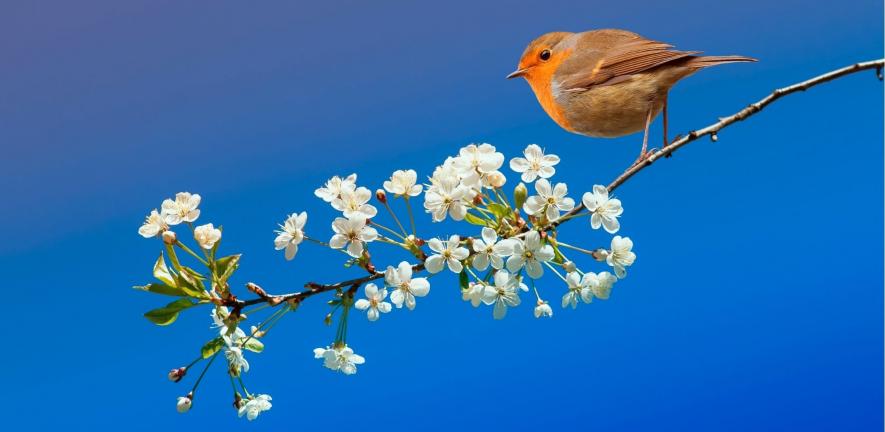
Submitted by Jessica Haskell on Wed, 2021-02-24 18:17
If you’ve ever been interested in learning more about birds then you’ll know how daunting a 300-page guidebook can be. Not only that, but if you haven't ever tried to identify a species before how do you know what to pay attention to? Is it the colour that’s important? What about size? Or shape of the wings? Even once you’ve carefully remembered all of that, how do you find it in a guidebook full of little brown birds that all look the same?
For many of us the pandemic has influenced our relationship with nature. My colleagues have been noticing birds outside their windows more, or consciously spending time outside to enhance their wellbeing, and they’re not alone. Before lockdown last year, 11,000 people were taking part in the Garden BirdWatch run by the British Trust for Ornithology. In contrast, between April and May 2020, over 7,000 new members signed up to record bird and wildlife sightings.[1]
I have always had an interest in wildlife, and particularly birds after seeing so many on the feeders at my Grandpa’s house in Scotland. I didn’t start watching them in earnest until about four years ago when I moved to a room in a house share with a view over the garden. I put out a couple of feeders and found it very therapeutic after work to just stand and watch through the window for a while - even if it did get quite manic at times with a flock of around 30 sparrows visiting! Whatever I’m feeling, I find when I stop and pay attention to nature I always see something that will make me smile. Even cycling to work one day along the Cam in the rain and cold, feeling thoroughly miserable, I saw a heron that looked even more fed up than me and I felt immediately better!
Alongside the UIS Green Impact team, I wanted to help make nature and wildlife accessible to everyone at this challenging time. Ahead of the RSPB’s Big Garden Birdwatch, I held a webinar to give UIS colleagues the confidence to try identifying birds that they might see in their local area. When you’re starting to ID birds it can make all the difference to have someone say “if you’re looking at a bird in a Cambridgeshire garden the odds are it’s going to be one of these 18 and here are some tips for finding out which one you’re looking at.” So that’s what I did!
The talk, now available on Streams, includes the fifteen species that appear on the RSPB scoring sheet, along with a few others I’ve seen in my garden in Cambridge. Species discussed include magpie, woodpigeon, long-tailed tit, blackbird, song thrush, dunnock, goldfinch and more.
In 2020 I ran a similar event but that was back in the dark ages where this sort of thing often took place in a “building”, and people had to actually “be there”! This year we had over 40 people tuning into the webinar and colleagues from other departments could easily join too. It was fantastic to hear that the webinar inspired people to take part in the RSPB Big Garden Birdwatch but more than that, it’s been really rewarding that the conversation has kept going. The Teams chat is still buzzing with sightings and tips for defending your feeders from squirrels, and one colleague has even incorporated the talk into his home-schooling schedule.
If you’d like to share your sightings and chat to others with a similar interest, why not join the University’s Biodiversity Yammer group and let us know which species you’ve managed to identify near you?
Guest post written by Natalie West
[1] https://www.bto.org/press-releases/over-7000-people-sign-garden-citizen-...

